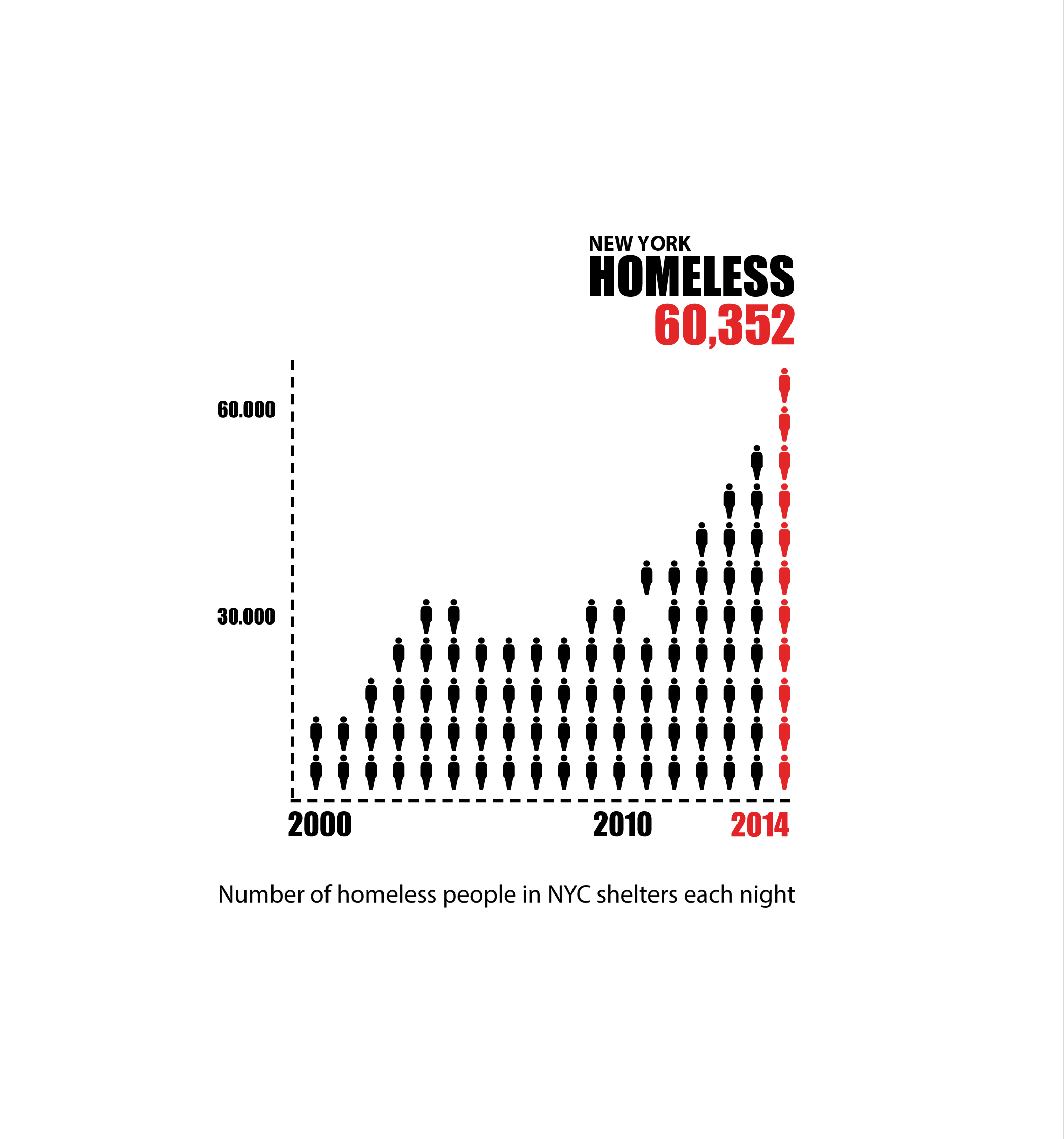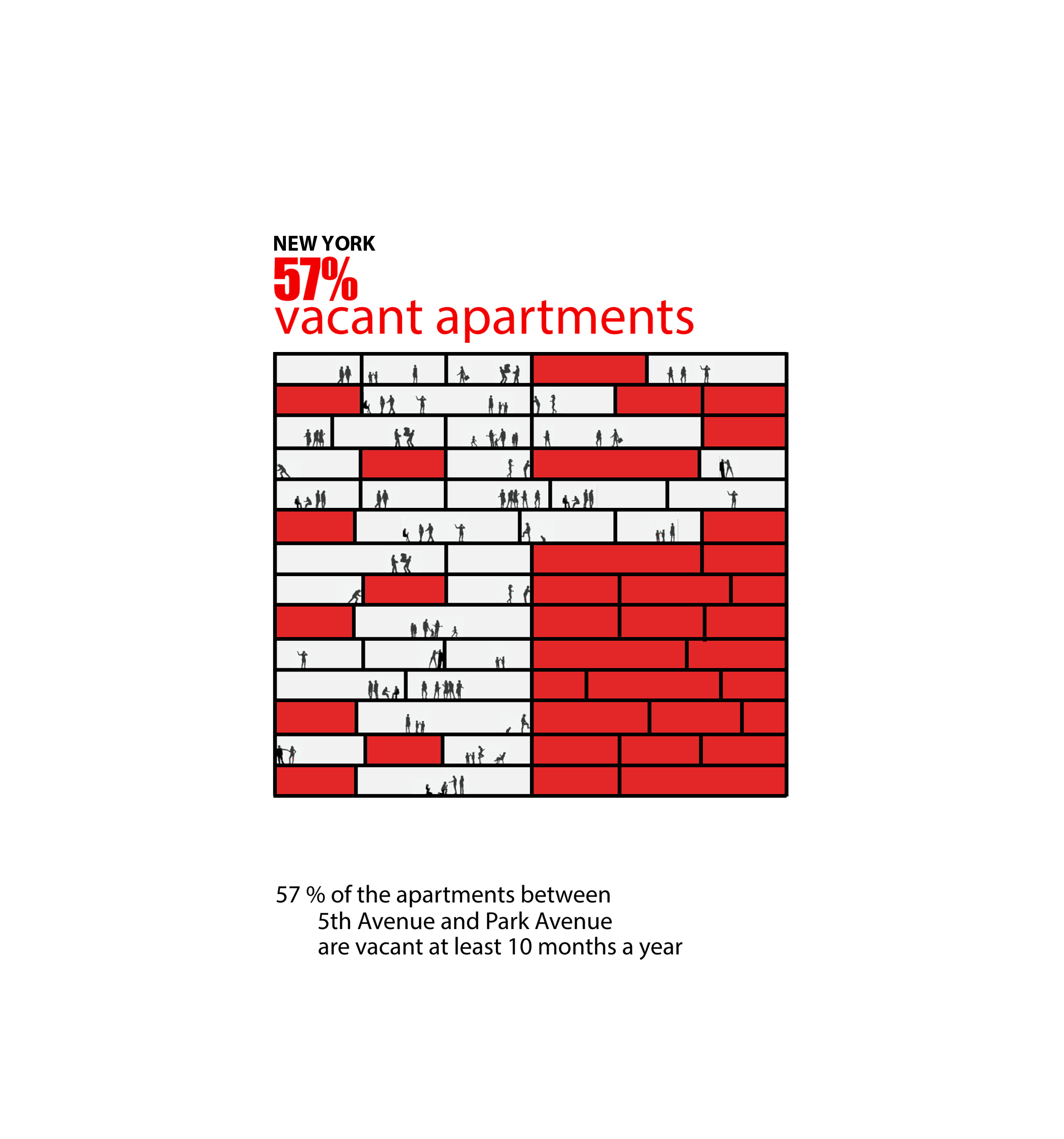Behind the Big Bend: The multi-faceted NY urban life
Behind the Big Bend: The multi-faceted NY urban life
Homeless statistics: Homelessness in New York City has been steadily increasing in the past 30 years. In recent years, it has reached the highest levels since the Great Depression of the 1930s. In November 2016, there were 62,840 homeless people, including 15,899 homeless families with 24,251 homeless children, sleeping each night in the New York City municipal shelter system. During the course of the year, though, the number goes up to more than 116,000 different homeless New Yorkers, including more than 42,000 different children. In comparison with ten years ago, we are talking about an 82% increase; in the same time, there is the issue of accurately counting the homeless that are not sleeping in the municipal shelters. The federal definition of who is homeless makes it difficult to estimate the actual numbers, and this undercounting leads to underfunding, which cuts the amount of aid. This said, at least 3,357 more homeless individuals were counted living on the streets or in subways in January 2014, the majority of which were in Manhattan. [Source: NYC Department of Homeless Services]
Ghost apartments: The primary cause of homelessness is a lack of affordable housing. The real estate web site Street Easy reported that a New York resident needed to earn an hourly pay rate of $38.50 to afford New York City’s median rent of $2,690 in 2015. Meanwhile, one third of the most expensive apartments in New York City are empty for at least 10 months of the year, according to a recent report by the US Census Bureau. Census data from 2012 shows that "from East 56th Street to East 59th Street, between Fifth Avenue and Park Avenue, 57 percent, or 285 of 496 apartments, including co-ops and condos, are vacant at least 10 months a year." A swath that's a bit north of that, from East 59th to East 63rd, shows that "628 of 1,261 homes, or almost 50 percent" are pied-a-terres. In the Plaza, 10 percent of the owners live there full time, which means about 135 of 150 homes are empty .


